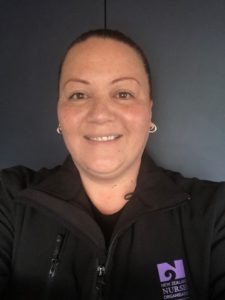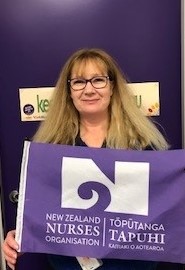Waikato District Health Board (WDHB)’s emergency department was down nine registered nurses (RNs) over the weekend due to COVID sickness/contact, while pressure was intensifying in Auckland, Wellington and Canterbury.
NZNO organiser in Auckland, Sharleen Rapoto said Omicron’s impact was “huge” across the city’s entire health system.

In the private sector, staff illness/isolation levels meant even office workers were “chipping in” to help on the ground in some facilities, Rapoto said. Meanwhile, in the aged care sector the call had gone out for family members of patients to come and help too.
Some private sector bargaining had stopped – staff shortages meant members no longer had time to attend meetings.
“I know at Counties [Manukau], where I organise, senior nurses have been shoulder-tapped to come out of their offices and come down on the floor … that’s been going on for weeks and weeks now.”
She said the number of people off work was “unreal”.
“The ones that are left behind are absolutely struggling, like I can’t even find a word to describe it, to be honest.”
Staff were scrambling to cover the shortages, which was impacting on the quality of care for patients.
COVID-19 vaccination requirements had seen the loss of some long-term staff – leaving behind a lack of experience on the floor.
“There’s a whole lot of pressure on new grads … a lot of our new nurses are being put in some really challenging situations just because they are registered nurses … which is concerning because they really are new.”
Rapoto said some graduates had simply “walked away” from nursing because of the current demands.
With MIQ facilities being closed, nursing staff from that sector were being snapped up elsewhere. Rapoto said one MIQ nurse she spoke to was redeployed “with an hour’s notice” because of demand.
Members were also caring for family members – living with aged family members who were vulnerable. “They just don’t want to be at work, don’t want to risk it. It’s massive.”
Waikato
Waikato Hospital’s emergency department (ED) was under growing strain, too, as registered nurses (RN) dropped off the roster due to COVID contact, NZNO organiser Nigel Dawson said. “Last night they had nine RN gaps in ED.”
Staff absenteeism due to COVID was around 20-30 per cent at Waikato DHB, he said. That came on top of the loss of more than 80 full-time equivalent (FTE) RNs from ED since November 2020, he said.
That meant the entire ED nursing workforce was new. “They’ve lost all their senior staff, they’ve lost all but one of the ACNM (associate charge nurse manager) team of six – so that entire team has now changed”.
One nurse feared he would lose his practising certificate if he carried on working in the ED as it was “just too dangerous” working in such stressed conditions. “It’s horrendous, they’re just not coping at all.”
Sunday night on Facebook, Dawson said NZNO delegates were reporting 23 patients with just three nurses; patients still in the waiting room, untriaged; the triage area being used as bed space; along with a lack of support from doctors, who were saying ‘this is how it is now, get on with it’.
Dawson said despite repeated pleas, no action had been taken by management, such as stemming patient flow into ED from outlying hospitals.
Wellington

In Wellington, sick leave due to COVID had grown to 15 per cent in the past week, NZNO organiser Jo Coffey said.
She said all areas were under pressure, but ED was “always at the frontline – they’re having a hard time in ED”.
Already, in the first week of March, 42 per cent of shifts across the hospital were below safe staffing targets. “It’s almost red everywhere,” Coffey said. “So that’s dire. . . If you’ve got a combination of both of those things – your shifts below target and your unplanned sick leave goes up on top of that, you get into dire states on the wards.”
On Monday, the number of COVID-19 patients in hospital was 696, up from 618 on Sunday. About four per cent of the entire population, 192,000 people, were active COVID-19 cases.
There were 13 people in intensive care units – up from 10 on Sunday.
NZNO has projected COVID-related absenteeism could hit 25-45 per cent of the health workforce at the peak of the Omicron outbreak.
The national view
Associate manager professional and nursing services Kate Weston said Omicron exacerbated an already chronic nursing staff shortage – which in some areas and sectors was now critical.

Weston said it was difficult to put a number on overall absence due to illness or isolation – but metropolitan Auckland was under particular pressure. Absences due to illness/isolation there were reaching up to 40 per cent on some days.
“The increase in hospital presentations and admissions is putting pressure on an under-resourced system – so non-urgent care is deferred.
“We hear that there are ‘plenty of beds’ … however what’s missing is the staff to provide the care.”
Weston said pressure was significant in the aged care sector where severe underlying staff shortages were already occurring.
Anecdotally there were similar problems in primary care – with high staff illness/isolation rates putting pressure on a sector that dealt with the majority of cases – those who remain in the community and not in hospitals.




